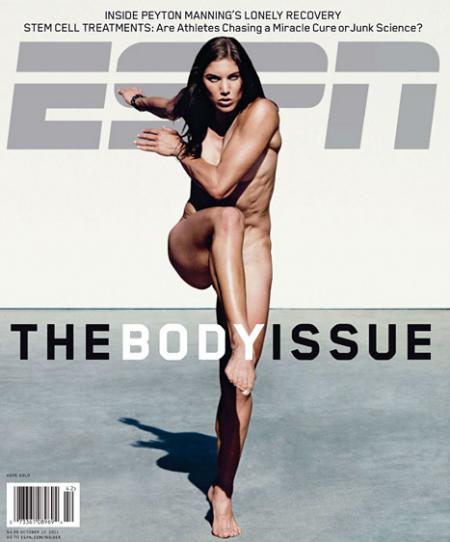Serendip is an independent site partnering with faculty at multiple colleges and universities around the world. Happy exploring!
Precarious and Performative Play Web Paper 2
A response to “Miss Representation 8 min. trailer:” Changing gender stereotypes by increasing visibility of female athletes
The trailer for Miss Representation by filmmaker Jennifer Siebel Newsom describes the power of the media, acknowledging that people learn more from it than any other single source of information. The media is the primary force that shapes our society: “politics, national discourse, and children’s brains, lives, and emotions” (Jim Steyer, CEO, Common Sense Media). Upwards of one billion people use the Internet every day (Marissa Mayer, Vice President, Consumer Products, Google); images are widely available and accessible without restrictions.
The messages disseminated by the mainstream media are pervasive, and more often than not emphasize and perpetuate harmful gender stereotypes. According to Miss Representation, women hold only 3% of clout positions in telecommunications, entertainment, publishing and advertising and comprise just 16% of all writers, directors, producers, cinematographers and editors. Because women are generally not the ones deciding how they are represented in the media, they are often shown as sex objects, valued by their looks rather than their achievements. As a result, “girls are taught that their value is based on how they look, and boys are taught that that’s what’s important about women” (Jean Kilbourne, EdD, Filmmaker, Killing Us Softly).


Publications from Pregnancy Education Reform
I have invented an organization, Pregnancy Education Reform, and have included two potential publications from the organization. The first is a collection of pdf images of the pages of a pamphlet entitled, “Intersex: An Introductory Guide for Moms-to-be”. And the second is an open letter to primary care providers explaining how to most effectively use the pamphlet and general advice for making prenatal and postnatal care more sensitive to intersex children and their families. Although the organization intends to empower women and their choices, it does take a position against non-medically necessary genitalia normalizing surgeries in its literature.

Dear Middleschoolers, Love, Charlie
Dear boys, girls, and those of you who just aren’t quite sure yet (because that is totally cool too),
For many of you, this is a confusing time. Things are growing in places where you aren’t sure if they are supposed to be growing, new places might develop novel smells, and you might start to feel differently. If any of these things apply to you, or if none of these things apply to you, you are still normal. Every body goes through different changes at different speeds and in completely different orders. So if your best friend is growing armpit hair, but you haven’t reached that point yet, don’t worry – we all catch up in the end! I am writing to you, middle-schoolers, because this time can be a bit scary; there are a lot of changes that you can expect in the next couple of years, and a lot of information out there, both true and false, so a quick guide to the next few years seems like a pretty good resource for you right about now. Read on to learn about what makes boys and girls different biologically, some of the changes that you can expect to your body during puberty, how babies are made, and a quick peek at the different categorizations of gender!
Let’s start from the very beginning. How did we get here and what exactly makes girls different from boys?





















